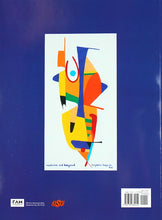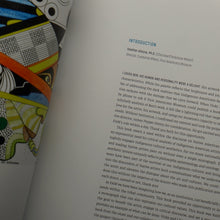edited by heather ahtone, Victoria Rowe Berry, America Meredith, and Ashley Holland. First Americans Museum in collaboration with Oklahoma State University Museum of Art.
from heather ahtone's Introduction:
"This book meets a need within the discourse on Native American art. There is an exponential need for critical analysis of Indigenous American artists that meaningfully engages Indigenous cultural aesthetics. Far too many nationally recognized and leading Native artists pass on without even a single monograph. Every tribe's aesthetic system uniquely reflects philosophy, epistemology, and ontology. These systems have been part of the survival of our Indigenous cultures and bringing them into the discussion of Native artists both contextualizes what we understand about the artist and elevates the dialogue about the art and cultures. We could not have done this without the impetus of the donors who made this publication possible. To each donor, named or not, thank you!
At FAM we have been imagining how we, as an institution, can beneficially impact needs within the tribal community. This book provided an opportunity to imagine a monograph that can also represent our cultural values. This book was built with the goal to benefit the artist, engage in critical discourse, and set a precedent that provides an example of what can be done. Vicky and I have shared this vision for the book from the onset and our collaborative process has shared the labors and carried the project through Ben's passing to completion. Thank you, Vicky.
...
The writing for every part of this project has been filled with a great deal of care. The project benefited from the thoughtful research by America Meredith to craft a biography that provides the contextual information often missed if one only looks at a singular generation of cultural experience. From her research, in addition to her essay, she constructed a comprehensive timeline that shows the benchmark moments in Ben's life and career. We wanted to make sure that Ben's artwork was analyzed more broadly than Oklahoma's art community. Ashley Holland provides a beneficial analysis with the context of American art history. The contributing community members and poets each took great care in crafting how to use the space assigned understanding the goals of the monograph--Joy Harjo, Suzan Shown Harjo, Laura Da', Ken Williams, Stacy Pratt, and Jackie Sevier. Thank you to each writer for every sentence you crafted.
This project is, at its core, a testament to love and joy. We did this book to celebrate Benjamin Harjo, Jr.'s artistic legacy. Thank you, reader, for completing the project by enjoying what we've prepared."






